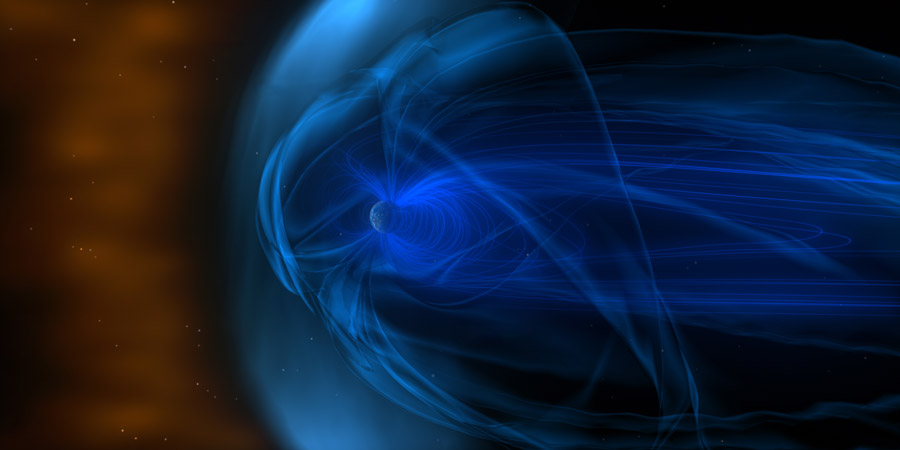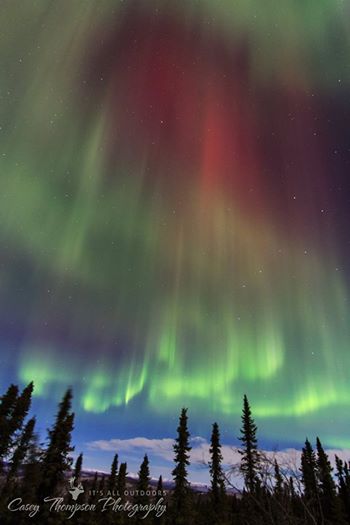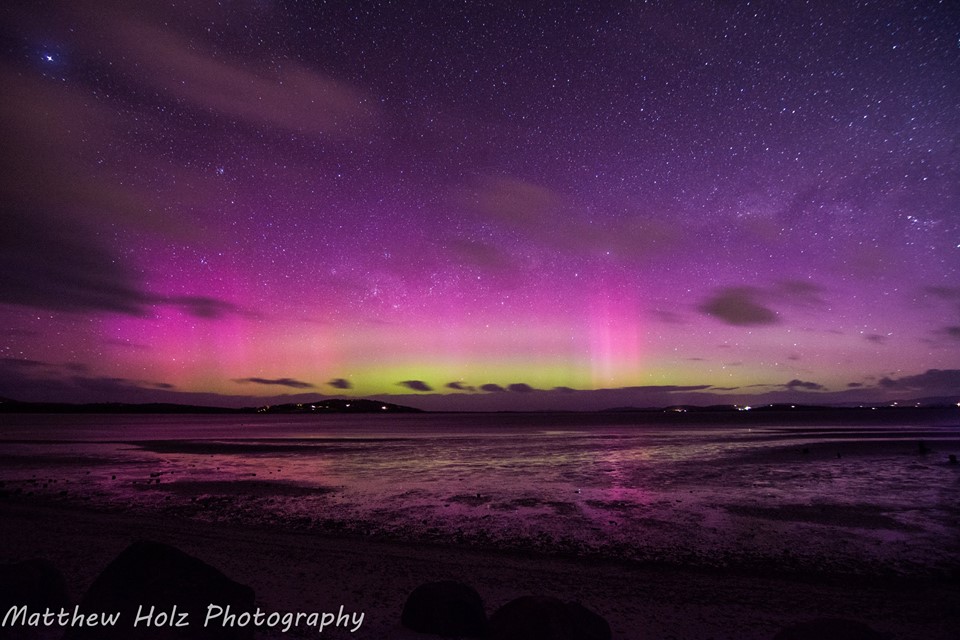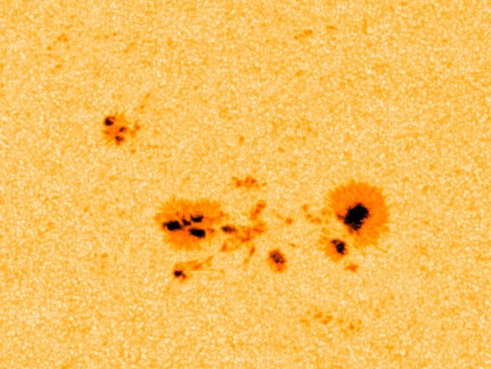CME impact, sunspot region 2205, STEREO B
Monday, 10 November 2014 18:24 UTC

This night around 01:46 UTC we saw the arrival of the X1.6 coronal mass ejection. It was slightly stronger and earlier than expected. In this article we take a look at the stats and what kind of geomagnetic conditions to expect in the hours ahead. We also take a look at sunspot region 2205 which was the source of numerous strong solar flares during the past few days. What is left of sunspot region 2205 and can we still expect activity from it? The STEREO mission team has also came out with a very detailed report regarding the loss of contact with STEREO Behind. It is an interesting read for those who wish to know more about STEREO Behind's current status.
X1.6 coronal mass ejection arrival
This night around 01:46 UTC we saw the arrival of the X1.6 coronal mass ejection. The coronal mass ejection was slightly stronger and earlier than expected. The strength of the interplanetary magnetic field (IMF) jumped up to a moderate value of 21nT, with a mostly northward component. The solar wind speed increased only slightly to a speed around 500km/s with a fairly low density, mostly below 10 p/cm3 which is consistent with what you could expect during a glancing blow coronal mass ejection passage.
The NOAA SWPC reported one period of minor G1 geomagnetic storming (highest measured value in any point during a 3 hour period) but the Wing-Kp never went higher than Kp4+.
Geomagnetic conditions are currently active (Kp: 4+) #aurora - Follow live on http://t.co/Gj5cI2OO1z pic.twitter.com/sRwlVMiGp9
— SpaceWeatherLive (@_SpaceWeather_) 10 november 2014
Aurora were seen from many locations around the world including Alaksa (USA), Canada and in the southern hemisphere the Aurora Australis appeared which could be seen from Tasmania and southern New Zealand. The image below was taken in Alaska by Casey Thompson Photography. Amazing!

Here is another shot from today's activity but this time from the southern hemisphere. This cracking shot was taken by Matthew Holz Photography from Tasmania! Stunning!

Following the impact, the strength of the IMF quickly decreased to lower values and it is now about 11nT with a variably direction which will likely cause more auroral outbreaks at high latitudes in the coming hours. Kp-values up to 4 (active geomagnetic conditions) remain possible in the hours ahead but more geomagnetic storming does not look very likely at this point. Northern Scotland, Norway, most of Sweden and Finland should remain alert for aurora in the coming hours.
Sunspot region 2205
Solar activity is low levels today but sunspot region 2205 did manage to produce an M2.3 solar flare yesterday. The solar flare was impulsive and no coronal mass ejection was released.
Moderately strong M2.36 solar #flare from #sunspot region 12205 - Follow live on http://t.co/Gj5cI2OO1z pic.twitter.com/UP63tZpdI3
— SpaceWeatherLive (@_SpaceWeather_) 9 november 2014
Sunspot region 2205 continues to decay further losing more penumbral area and spots. It still retains two delta structures with the strongest one in the central part of the region but as decay continues the chances on strong flares are getting lower. It retains a Beta-Gamma-Delta magnetic layout making it complex enough for an M-class (R1-R2) event but the chances are significantly lower compared with what we saw just a few days ago. X-class events are not to be expected anymore.
M-class flare probability for the coming 24 hours: 30% chance
X-class flare probability for the coming 24 hours: 1% chance

All the other sunspot regions on the disk are unremarkable and unlikely to produce strong solar flares. Any future solar flares will very likely be centered around sunspot region 2205. Old sunspot region 2192 is now about 3 days away from rotating back onto the earth-facing solar disk. If it is still large and active, there might also be solar flares coming from just behind the limb.
STEREO Behind
The STEREO team has written a very detailed blog post describing the events leading to the loss of communications with STEREO Behind. It is a technical read but to summarize it seems that the STEREO B spacecraft suffered two malfunctions which could have launched the spacecraft in an uncontrolled spin.
The STEREO team is still attempting to re-establish communications with the STEREO Behind spacecraft. The entire article can be found here.
Thank you for reading this article! Did you have any trouble with the technical terms used in this article? Our help section is the place to be where you can find in-depth articles, a FAQ and a list with common abbreviations. Still puzzled? Just post on our forum where we will help you the best we can!
Latest news
Latest forum messages
Support SpaceWeatherLive.com!
A lot of people come to SpaceWeatherLive to follow the Sun's activity or if there is aurora to be seen, but with more traffic comes higher server costs. Consider a donation if you enjoy SpaceWeatherLive so we can keep the website online!

Space weather facts
| Last X-flare | 2024/03/28 | X1.1 |
| Last M-flare | 2024/04/25 | M1.3 |
| Last geomagnetic storm | 2024/04/19 | Kp7 (G3) |
| Spotless days | |
|---|---|
| Last spotless day | 2022/06/08 |
| Monthly mean Sunspot Number | |
|---|---|
| March 2024 | 104.9 -19.8 |
| Last 30 days | 133.4 +25.6 |


